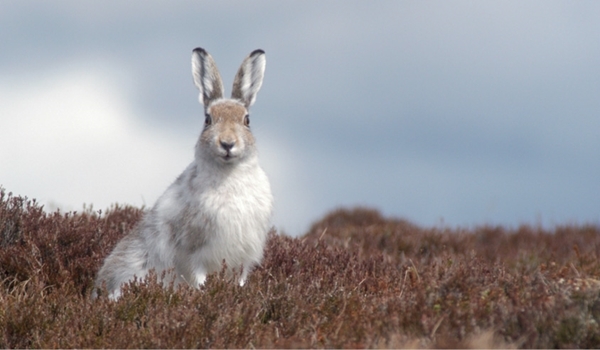
AFTER a ten-year absence, the Game and & Wildlife Conservation Trust’s (GWCT) Scottish Mountain Hare Survey is making a return.
The only native hare species in Britain, the mountain hare is an integral part of Scotland’s moorland heritage, and the Scottish government has a legal obligation to ensure the sustainable management of this species.
However, in order to make informed decisions on the future management of mountain hare, it is important to understand their current distribution, how they are managed and why.
The last comprehensive study in 2006/07 received nearly 1,000 responses and highlighted the key role moorland management for grouse plays in supporting the mountain hare. This year, the GWCT will be working in partnership with the Scottish Gamekeepers Association (SGA) and Scottish Land & Estates (SLE) to update this study.
Dr Adam Smith, Director Scotland for GWCT, said: “Scotland’s indigenous hare species is a remarkable animal, one of only three in the UK that change colour into white winter dress. Our range survey ten years ago showed the species was increasingly dependent on grouse management, probably benefiting from heather habitat conservation and predator control.
“Increasing or shrinking range is often a sign of a species thriving or in distress. For this reason, ten years on is the correct time to re-survey the mountain hare range in Scotland. We will use this knowledge to inform land managers about the impact of woodland expansion and shooting on mountain hares in Scotland, and it will underpin research into the species’ conservation requirements in the future.”
In the coming weeks, the GWCT, Scottish Gamekeepers Association and Scottish Land & Estates will be asking their Scottish members to take part in a questionnaire-based survey, which will ask where they have seen mountain hare between spring 2016 and spring 2017. Alongside a survey of their members, they will be appealing to members of the public to submit sightings of mountain hares, together with a grid reference, to mountainhares@gwct.org.uk.
If you own or manage land in Scotland and want to get involved in the study but are not a member of any of the organisations taking part, please email mountainhares@gwct.org.uk.
If you want to get involved or for more information about this important project, visit www.gwct.org.uk/mountainharesurvey
How do you identify the mountain hare?
The mountain hare is sometimes known as the ‘blue hare’ because of its blue-grey summer coat, in contrast to the rich-brown fur of the brown hare. The mountain hare’s winter coat is white, while the brown hare’s coat remains brown. Only the brown hare has a black upper surface to the tail.
The mountain hare is smaller than the brown hare, having a body length of around 50-60cm, with a more rounded shape. Mountain hares also have shorter ears and legs than the brown hare, although both types of hare have much longer ears and hind legs than rabbits, which are sometimes confused with hares. Rabbits are smaller and do not have black tips to the ears. Please see our website www.gwct.org.uk/mountainharesurvey
Notes to editors
The Game & Wildlife Conservation Trust – providing research-led conservation for a thriving countryside. The GWCT is an independent wildlife conservation charity which has carried out scientific research into Britain’s game and wildlife since the 1930s. We advise farmers and landowners on improving wildlife habitats. We employ more than 60 post-doctoral scientists and other research staff with expertise in areas such as birds, insects, mammals, farming, fish and statistics. We undertake our own research as well as projects funded by contract and grant-aid from government and private bodies.
For information, contact:
Eleanor Williams
Telephone: 07592 025476
Email: press@gwct.org.uk